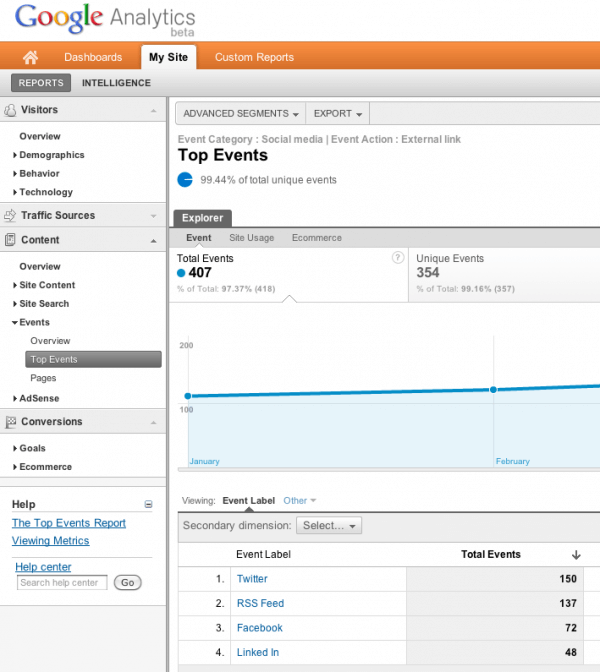What Data Is Google Analytics Goals Unable to Track: Find Out the Limitations
What Data Is Google Analytics Goals Unable to Track: Find Out the Limitations
Blog Article
Introducing the Blind Destinations: Comprehending What Google Analytics Goals Can not Measure
In the realm of electronic analytics, Google Analytics stands as a powerful device for tracking and evaluating on the internet customer communications. Recognizing what Google Analytics goals can not gauge is essential for getting a detailed sight of user actions and interaction.
Customer Actions on External Operatings Systems
Understanding just how customers connect on exterior systems is important for optimizing on the internet methods. External systems, such as social media networks, referral web sites, and online forums, play a substantial role in driving traffic to a business's internet site. By evaluating individual actions on these systems, businesses can obtain valuable understandings into the effectiveness of their marketing initiatives and the preferences of their target market.
One key facet of individual actions on outside systems is the referral resource. By tracking where the users are coming from, businesses can recognize which platforms are driving one of the most traffic to their web site. This details can help companies assign their resources extra effectively, focusing on the systems that generate the very best results.

Offline Interactions and conversions
Examining customer behavior on external platforms supplies valuable understandings right into on-line approaches; nonetheless, thinking about offline conversions and interactions is similarly imperative for a comprehensive understanding of a business's total efficiency. While Google Analytics stands out at tracking on-line communications, it drops short in recording the full consumer trip that usually includes offline touchpoints. Offline conversions, such as in-store purchases or phone inquiries, play a significant duty in many companies' success. Neglecting these communications can cause an altered view of the efficiency of marketing projects and general company performance.

Attribution Beyond Last Click
When diving right into the realm of electronic advertising analytics, it ends up being important to look beyond the solitary touchpoint of the last click for an extra extensive understanding of attribution. While Google Analytics offers valuable insights right into individual behavior, relying solely on last-click attribution can be limiting - what discover this info here data is google analytics goals unable to track. Acknowledgment designs that exceed the last click use a much more nuanced sight of the customer trip, taking into consideration all the touchpoints that result in a conversion
Acknowledgment beyond the last click permits marketing professionals to designate credit to different communications along the conversion path, offering a clearer photo of the effectiveness of various marketing networks. By checking out multi-touch attribution models such as straight, time decay, or position-based acknowledgment, services can better allocate their advertising and marketing budgets and optimize their approaches for maximum influence.
Comprehending the influence of each touchpoint in the conversion process is vital for making informed decisions and taking full advantage of ROI. By welcoming attribution past the last click, services can get much deeper insights into consumer habits and tailor their advertising and marketing efforts a lot more successfully.
Cross-Device and Cross-Browser Tracking

Likewise, hop over to here cross-browser monitoring complements cross-device tracking by capturing user actions as they switch between different internet internet browsers. Comprehending exactly how individuals connect with internet sites on different internet browsers can assist marketing experts optimize their on-line experiences to make sure consistency and functionality throughout different platforms.
Qualitative Information and User Intent
Understanding user intent via qualitative data analysis is vital for developing targeted digital advertising and marketing strategies that resonate with the needs and preferences of the target audience. Qualitative data supplies insights right into the 'why' behind user actions, clarifying motivations, emotions, and preferences that quantitative data alone can not capture. By examining user responses, remarks, and communications, marketers can uncover valuable information about customer intent, permitting them to tailor their messaging, web content, and offerings to better straighten with what their audience is looking for.
Qualitative information also aids in recognizing the context in which customers involve with a web site or application. This contextual understanding allows marketing experts to develop more individualized and pertinent experiences, ultimately driving higher engagement and conversion rates. By diving right into customer intent via qualitative data evaluation, organizations can obtain a much deeper understanding of their target audience, causing more effective marketing techniques that satisfy customers' expectations and needs.
Conclusion
To conclude, Google Analytics goals have limitations in determining individual actions on outside systems, offline conversions, attribution beyond last click, cross-browser and cross-device tracking, and qualitative information connected to customer intent. what data is google analytics view goals unable to track. It is necessary for businesses to be knowledgeable about these dead spots in order to supplement their data analysis with other tools and methods to acquire a more comprehensive understanding of their target market and enhance their overall electronic advertising approaches
By examining individual actions on these systems, businesses can acquire beneficial insights right into the effectiveness of their advertising and marketing efforts and the preferences of their target audience.
Examining customer behavior on exterior platforms provides useful understandings into online methods; however, considering offline conversions and communications is equally essential for a comprehensive understanding of a firm's overall efficiency.In digital marketing analytics, moving past last-click acknowledgment to explore cross-device and cross-browser tracking is necessary for getting a holistic understanding of customer communications throughout different platforms and gadgets. By examining customer responses, remarks, and interactions, marketing professionals can reveal beneficial information regarding customer intent, enabling them to customize their messaging, web content, and offerings to much better straighten with what their target market is seeking.
By diving into user intent through qualitative information analysis, companies can acquire a much deeper understanding of their target audience, leading to more effective marketing techniques that meet customers' demands and assumptions.
Report this page